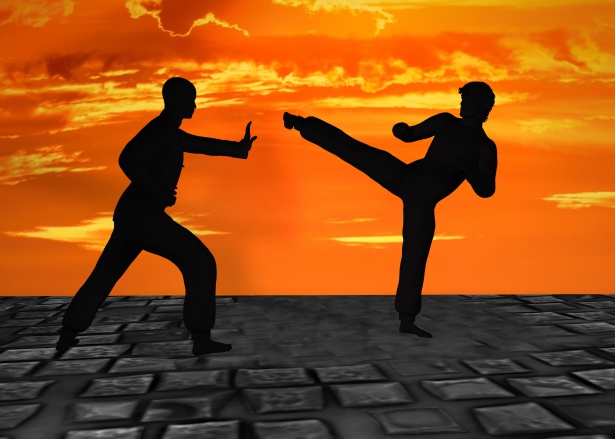
Wondering, “How many martial arts are there?” Martial arts, encompassing a diverse array of disciplines, have been practiced for centuries across different cultures worldwide. These disciplines serve various purposes, including self-defense, physical fitness, spiritual development, and cultural preservation. In this comprehensive exploration, we delve into five distinct martial arts forms: Aikido, Shotokan Karate, Iaido, Iaijutsu, and Self-Defense. Each of these disciplines offers unique insights into combat techniques, philosophy, and historical significance.
Aikido:
Aikido, translated as “the way of harmony with the spirit,” is a Japanese martial art developed in the early 20th century by Morihei Ueshiba. It emphasizes blending with an opponent’s movements rather than directly opposing them. Aikido techniques often involve redirecting an attacker’s energy through joint locks, throws, and pins. The philosophy of Aikido focuses on achieving harmony and peaceful resolution rather than inflicting harm.
Key Principles of Aikido:
- Aiki: The concept of harmonizing with an opponent’s energy.
- Irimi: Entering into an opponent’s space while maintaining control.
- Tenkan: Turning movements to redirect the force of an attack.
- Kokyu: Utilizing breath and relaxation to maintain fluidity in movements.
Training in Aikido involves rigorous physical conditioning, including flexibility exercises, ukemi (falling techniques), and tai sabaki (body movement). Additionally, practitioners study philosophical principles such as non-resistance, circular motion, and the importance of maintaining a calm mind even in the face of conflict.
Shotokan Karate:
Shotokan Karate, one of the most widely practiced forms of Karate, traces its roots to Gichin Funakoshi, who introduced this martial art to mainland Japan from Okinawa in the early 20th century. Shotokan emphasizes powerful linear techniques, including punches, kicks, and strikes, executed with precision and focus.
Key Elements of Shotokan Karate:
- Kihon: Basic techniques such as stances, blocks, punches, and kicks.
- Kata: Prearranged forms or sequences of movements that simulate combat scenarios.
- Kumite: Sparring exercises ranging from controlled, predetermined movements to free-style sparring.
Training in Shotokan Karate involves repetitive practice of fundamental techniques to develop speed, strength, and coordination. Practitioners also focus on developing mental discipline, respect, and humility through adherence to the dojo etiquette and the guiding principles of Karate-do.
Iaido:
Iaido, often referred to as the “art of drawing the sword,” is a Japanese martial art that focuses on the precise, controlled movements of drawing, cutting, and sheathing a katana (Japanese sword). Unlike other martial arts that emphasize combat techniques, Iaido practitioners primarily train in solo forms (kata) to cultivate mindfulness, awareness, and precision in their movements.
Key Aspects of Iaido:
- Nukitsuke: Drawing the sword in a single fluid motion.
- Kata: Sequences of movements that simulate various combat scenarios.
- Noto: Sheathing the sword with precision and control.
Training in Iaido involves repetitive practice of kata, focusing on perfecting each movement to achieve a state of mushin (no-mind) and zanshin (awareness). Practitioners also study the philosophical aspects of Bushido (the way of the warrior), emphasizing discipline, honor, and respect.
Iaijutsu:
Iaijutsu, closely related to Iaido, is a traditional Japanese martial art focused on quick, decisive sword techniques from a seated or standing position. Unlike Iaido, which primarily focuses on solo forms, Iaijutsu includes partner practices (kumitachi) to simulate combat scenarios.
Key Elements of Iaijutsu:
- Tachiwaza: Techniques performed from a standing position.
- Seizawaza: Techniques performed from a seated position.
- Kumitachi: Partner practices involving predetermined attack and defense sequences.
Training in Iaijutsu encompasses both solo and partner practices, emphasizing the development of fluid, efficient movements and effective strategies for dealing with multiple opponents or surprise attacks. Practitioners also study the historical and cultural context of samurai warfare, including strategies, tactics, and battlefield ethics.
Self-Defense:
Self-defense encompasses a broad range of techniques and strategies designed to protect oneself from physical harm. While not a traditional martial art in the strictest sense, self-defense training draws from various martial arts disciplines to teach practical techniques for neutralizing threats and escaping dangerous situations.
Key Aspects of Self-Defense:
- Awareness and Prevention: Recognizing potential threats and avoiding dangerous situations.
- Physical Techniques: Techniques for striking, grappling, and escaping holds or grabs.
- Legal and Ethical Considerations: Understanding the legal implications of self-defense actions and using proportional force.
Self-defense training varies widely, ranging from structured classes taught by certified instructors to informal workshops or online courses. Techniques may include strikes to vulnerable targets, joint locks, throws, and improvised weapons training. Additionally, self-defense training often incorporates scenarios and simulations to practice applying techniques under stress.
Conclusion:
Martial arts encompass a rich tapestry of disciplines, each offering unique insights into combat techniques, philosophy, and cultural heritage. From the harmonious movements of Aikido to the precise sword techniques of Iaido and the practical self-defense strategies, these martial arts forms provide valuable tools for physical fitness, mental discipline, and personal development. Whether pursuing martial arts for self-defense, spiritual growth, or cultural appreciation, practitioners find a wealth of knowledge and experience within these ancient traditions.
